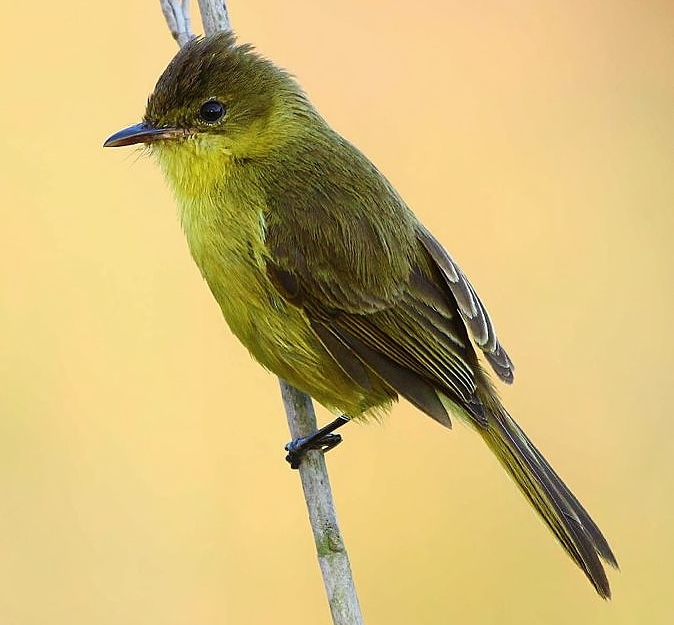 |
| Photo by Chris Krog (Stellenbosch Birds) |
Common name:
yellow flycatcher-warbler (en); felosa-amarela-africana (pt); chloropète jaune (fr); cloropeta común (es); schnäpperrohrsänger (de)
Taxonomy:
Order Passeriformes
Family Sylviidae
Range:
This species is found in sub-Saharan Africa, being patchily distributed from from Nigeria east to Ethiopia, south through eastern D.R. Congo, Angola and Zambia, and into north-eastern South Africa.
Size:
These birds are 14-15 cm long and weigh 12 g.
Habitat:
The yellow flycatcher-warbler is mostly found in moist scrublands along watercourses, and also along the edges of reedbeds and moist tropical forests and in wet grasslands.
Diet:
They mostly glean caterpillars from dense vegetation, but also hawks termite alates from a perch.
Breeding:
Yellow flycatcher-warblers breed in September-March. They nest in a cup made of grass blades, typically placed between upright stems or in the fork of a scrub, up to 2 m above the ground. There the female incubates 2-3 eggs which she incubates alone for 12 days. The chicks are fed by both parents and fledge 14-16 days after hatching, becoming independent 1 month later.
Conservation:
IUCN status – LC (Least Concern)
This species has a very large breeding range and is described as locally common in parts of this range. The population is suspected to be stable in the absence of evidence for any declines or substantial threats.







